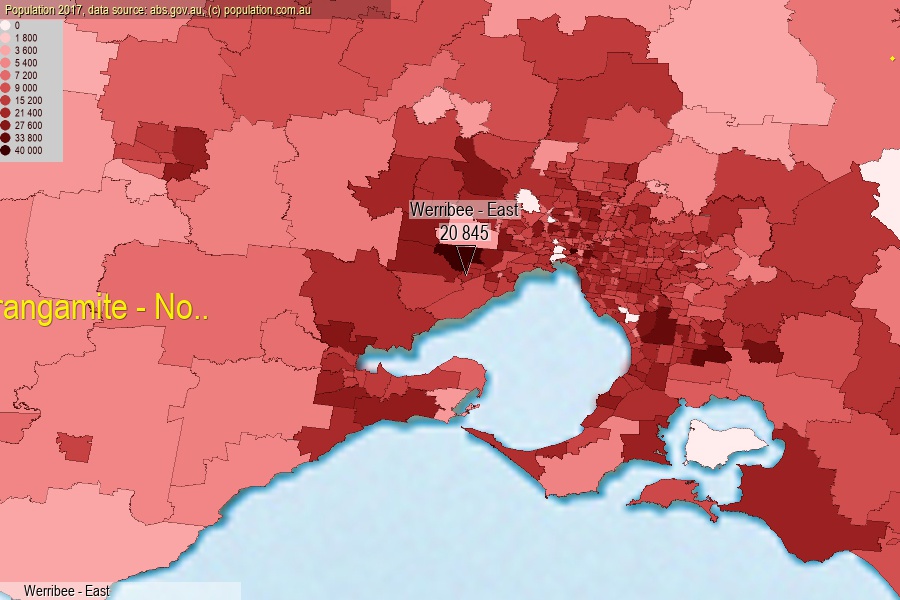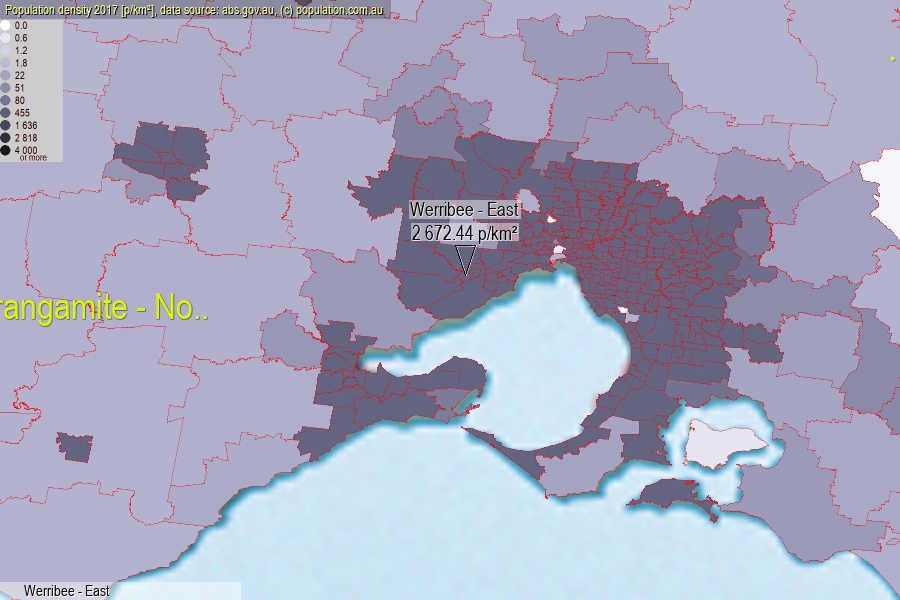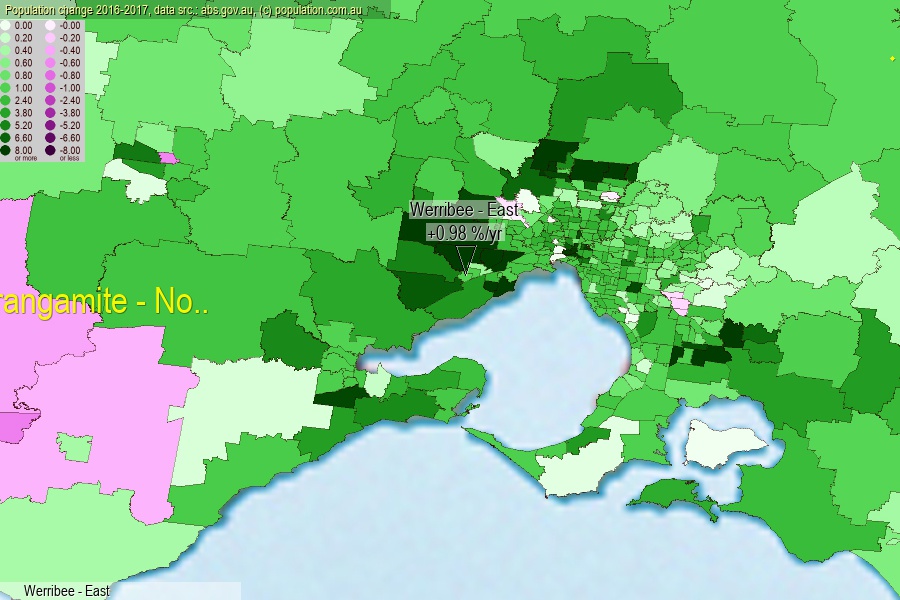 population.com.au
population.com.auLast official estimated population of Werribee - East (as Statistical Area Level 2) was 20 845 people (on 2017-06-30)[2]. This was 0.08% of total Australian population and 0.324% of VIC population. Area of Werribee - East is 7.80 km², in this year population density was 2 672.44 p/km² . If population growth rate would be same as in period 2016-2017 (+0.98%/yr), Werribee - East population in 2025 would be 22 534. [0]



Click to enlarge. Werribee - East is located in the center of the images.
Population [people], population density [p./km²] and population change [%/year] [2]
View borders » (new window) [4]
[2001-2002] +3.91 %/Yr.
[2002-2003] +4.59 %/Yr.
[2003-2004] +3.05 %/Yr.
[2004-2005] +2.78 %/Yr.
[2005-2006] +0.94 %/Yr.
[2006-2007] +1.01 %/Yr.
[2007-2008] +0.77 %/Yr.
[2008-2009] +1.62 %/Yr.
[2009-2010] +0.71 %/Yr.
[2010-2011] +0.85 %/Yr.
[2011-2012] +0.97 %/Yr.
[2012-2013] +0.94 %/Yr.
[2013-2014] +0.91 %/Yr.
[2014-2015] +0.99 %/Yr.
[2015-2016] +1.30 %/Yr.
[2016-2017] +0.98 %/Yr.
[0] Calculated with linear interpolation from officially estimated population
[1] Read more about SA2 and Australian Statistical Geography Standard (ASGS) on abs.gov.au
[2] Population data from Australian Bureau of Statistics (Population and density: 2017; change: 2016-2017)
[3] Digital Boundaries: Australian Statistical Geography Standard (ASGS) 2016.
[4] Border coordinates are simplifyed using Ramer-Douglas-Peucker algorithm.